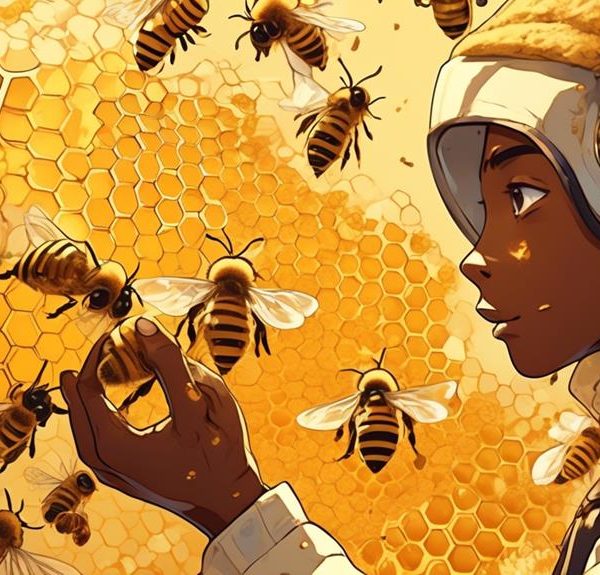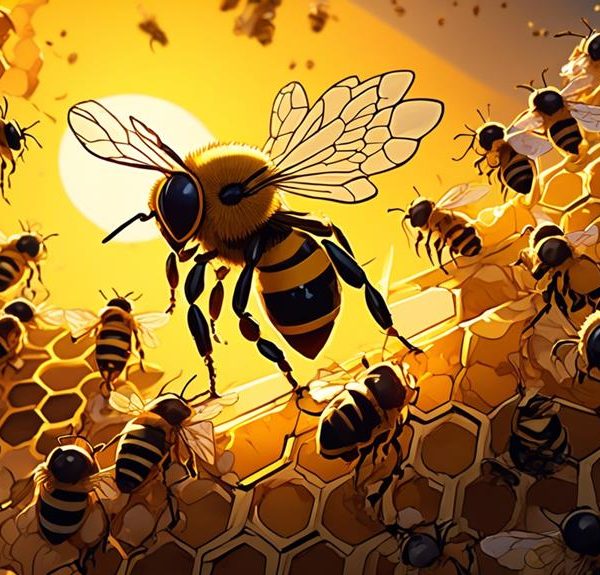Knowing the beeswax yield per hive can be a complex calculation; discover the fascinating factors that influence this vital aspect of beekeeping.
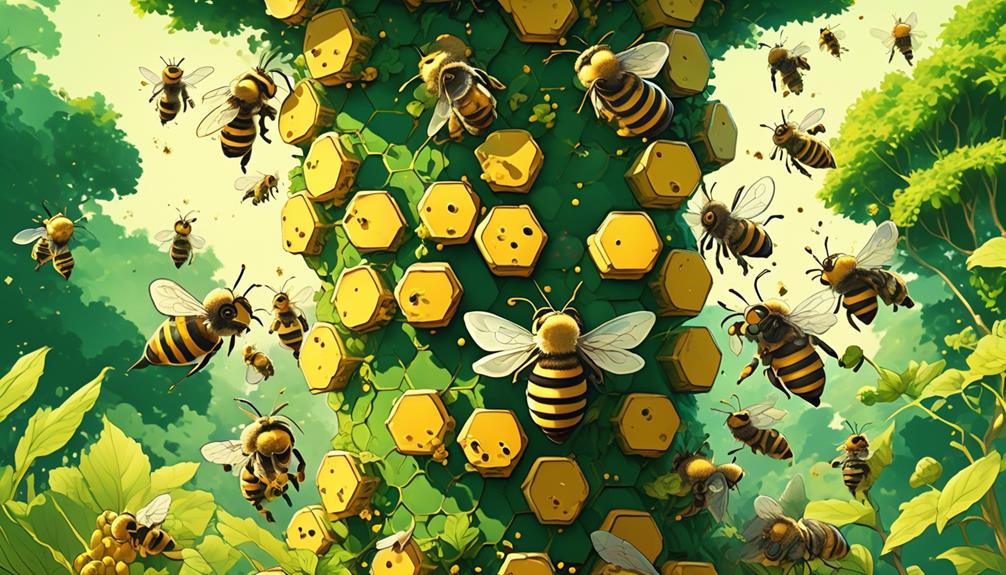
How Much Beeswax per Hive?
Imagine standing in a sun-dappled orchard, the air around you thrumming with the industrious hum of bees as they flit from flower to flower. You're pondering one of the less talked about, yet vital, aspects of beekeeping: beeswax production.
Just how much beeswax can one expect from a single hive? The answer, you'll find, isn't as straightforward as you might think. Multiple factors – from the bees' diet to the local climate – can significantly impact the amount of beeswax a hive produces.
Stay with us, and we'll explore these factors, and more, in our quest to better understand the wax yield of a typical hive.
Key Takeaways
- The average beehive can yield 1 to 2 pounds of beeswax per year.
- Beeswax production is influenced by factors such as bees' health, age, and availability of rich nectar sources.
- Younger bees are more efficient wax producers, and wax production decreases as bees age.
- Enhancing bee health through nutrition, pesticide protection, and disease management can increase overall beeswax yield.
Understanding Beeswax Production

Often, you may not realize that beeswax, a natural substance secreted by worker bees, plays a vital role in the structure and functioning of the hive. This substance, derived from honey and pollen, is first secreted by young bees in their wax glands. It starts as a clear liquid but quickly hardens into a solid, wax-like substance. Bees then use this beeswax to construct the honeycomb, a structural masterpiece of hexagonal cells that house honey, pollen, and bee larvae.
You might be surprised to learn that beeswax production isn't a constant process. It's actually a delicate balance, influenced by factors like the bees' health, age, and diet, as well as environmental conditions such as temperature and availability of flowers. Bees need to consume large quantities of honey to produce a small amount of wax. For instance, they might consume eight pounds of honey just to produce one pound of wax.
Factors Influencing Beeswax Yield
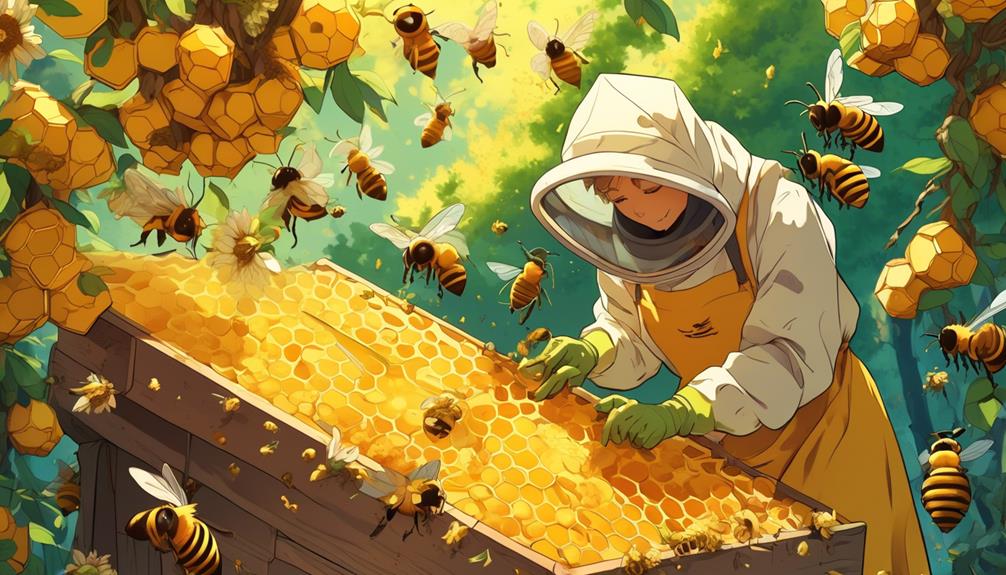
You mightn't be aware, but the yield of beeswax per hive hinges on a variety of factors, ranging from the health and age of the bees to the environmental conditions of their habitat.
Healthy bees are vital to producing substantial amounts of beeswax. Any diseases or parasites can significantly diminish beeswax output. Furthermore, younger bees, specifically those aged 12-20 days, are the most efficient wax producers. So, the age distribution of your hive directly influences beeswax yield.
Environmental factors also play a crucial role. Bees need a temperature of around 33-36°C to produce wax. Therefore, habitat conditions that maintain this temperature range are optimal. Additionally, the availability of forage, particularly rich nectar sources, boosts wax production as bees use the sugars in nectar to synthesize wax.
Typical Beeswax Yield per Hive
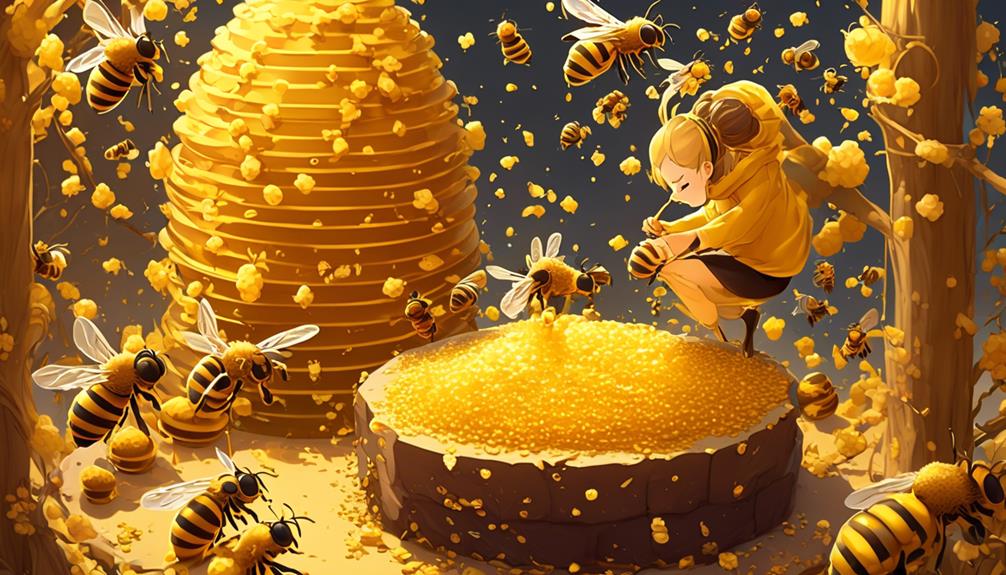
Diving into the specifics, an average beehive can typically yield around 1 to 2 pounds of beeswax each year. This figure, however, isn't set in stone. It may fluctuate based on factors such as the health of the hive, the breed of the bees, and the local climate and flora.
Beeswax production is indeed a labor-intensive process for bees. It's estimated that bees need to consume around 6 to 8 pounds of honey to produce just 1 pound of beeswax. So, if you're a beekeeper, your hive's honey production will directly impact the amount of beeswax you can expect.
Furthermore, the age of the bees also affects the yield. Young worker bees, which have developed wax glands, are the ones primarily responsible for beeswax production. As bees age, their ability to produce wax decreases, impacting the overall yield.
Lastly, the season of the year also plays a role. Beeswax production typically peaks in the warmer months when flowers are abundant and bees are most active. So, you'll likely see a drop in beeswax yield during the cooler months when bees are less active.
Enhancing Beeswax Production
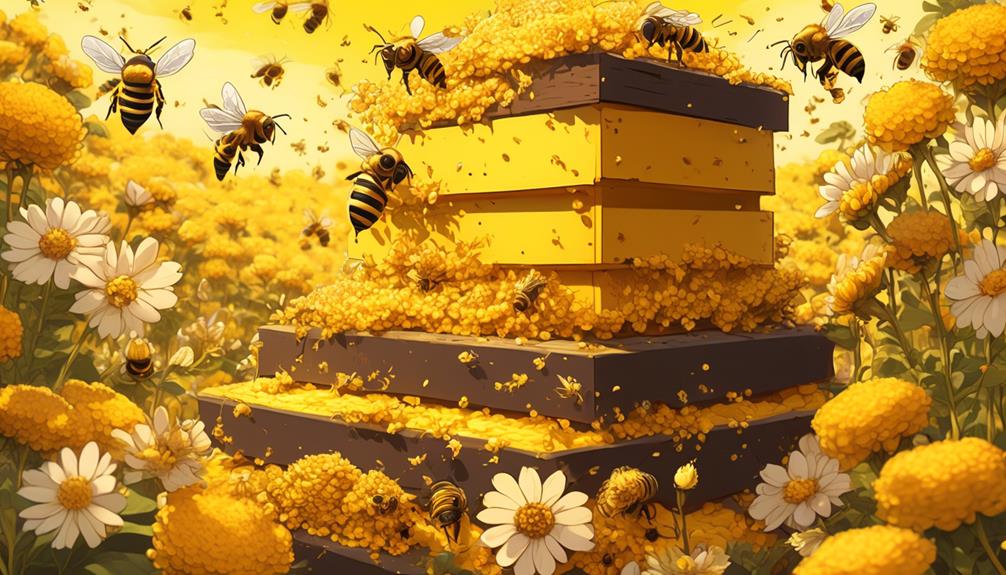
Given these factors impacting beeswax yield, it's possible to adopt certain strategies to enhance your hive's beeswax production.
Firstly, ensure your bees have access to a diverse range of flowers. Diversity in pollen types not only improves their overall health but also boosts wax secretion.
Secondly, manage the hive's population effectively. A high population of worker bees can significantly increase wax production.
Another strategy is hive manipulation. Regularly check for old combs and replace them with new ones. This encourages the bees to produce more wax to build new combs. However, be careful not to overdo it as excessive manipulation can stress the colony and reduce productivity.
Lastly, consider the hive's location. Bees need a warm environment to produce wax, so placing your hives in a sunny location can help. However, too much heat can melt the wax, so a balance is necessary.
Impact of Bee Health on Wax Production
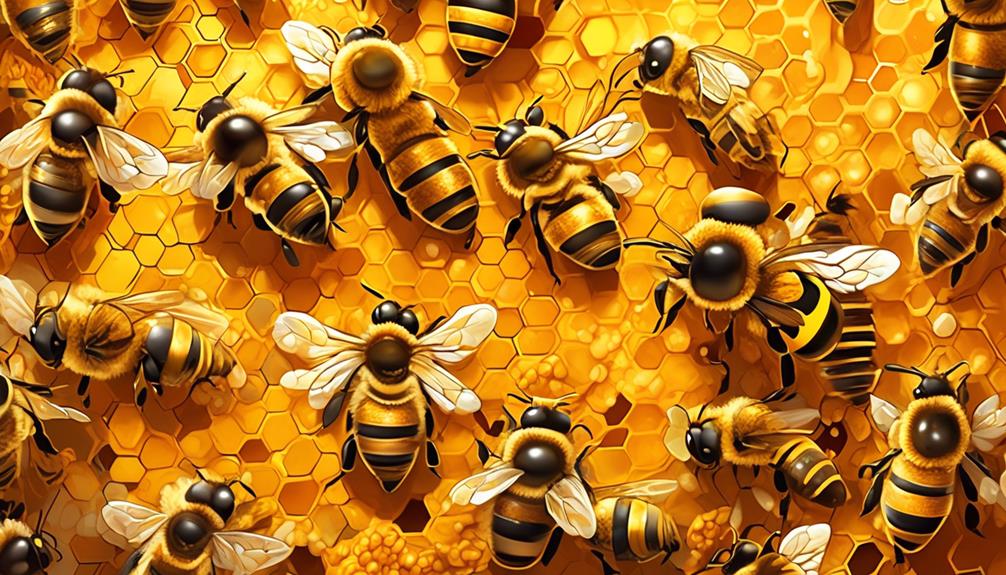
Understanding the intricate link between bee health and beeswax production is crucial, as healthy bees are more likely to produce higher quantities of quality beeswax. When bees are well-nourished and free from disease, they're able to devote more energy to wax production. This increases the overall yield of beeswax per hive.
On the other hand, bees suffering from malnutrition, disease, or stress won't produce as much wax. They're too busy fighting off illness or trying to survive. It's like you trying to work while you're sick. You're not going to be as productive, right? The same applies to bees. Their health directly impacts their ability to produce wax.
Therefore, ensuring optimal bee health isn't just about increasing honey yield; it also significantly boosts beeswax production. This includes providing bees with a diet rich in pollen and nectar, protecting them from harmful pesticides, and managing diseases and pests effectively.
Frequently Asked Questions
What Are the Various Uses of Beeswax in Different Industries?
You'll find beeswax used in various industries. It's a key ingredient in cosmetics like lip balms, lotions, and makeup.
The pharmaceutical industry uses it in tablet coatings and ointments.
It's also in food processing as a coating or glazing agent.
In arts, it's used for encaustic painting and in candle making.
Even the automotive industry uses beeswax in car waxes.
It's a versatile product with wide-ranging applications.
How Does the Quality of Beeswax Vary Among Different Species of Bees?
You'll find the quality of beeswax varies among bee species.
For instance, the Western honey bee produces high-quality wax, widely used in industries.
The Eastern honey bee's beeswax is darker, denser, and has a stronger aroma, making it less desirable.
It's not just species, but also the bee's diet and age that impact the quality.
How Can I Safely Harvest Beeswax Without Harming the Bees?
You can safely harvest beeswax without harming bees by using a gentle bee brush to sweep them off the combs. Make sure you're wearing protective gear and only take the outermost frames.
It's best to do this on a warm day when the bees are out foraging. Remember, don't take too much at once; bees need their wax to survive. Always leave enough for them to rebuild their hive.
Can Beeswax Be Used for Medicinal or Cosmetic Purposes, and if So, How?
Absolutely, you can use beeswax for both medicinal and cosmetic purposes.
In medicine, it's often found in balms and salves due to its ability to soothe and heal wounds.
For cosmetics, it's a common ingredient in lip balms, lotions, and makeup as it provides a protective barrier on the skin while locking in moisture.
Always ensure any beeswax you use is pure and free from any harmful additives.
What Are the Environmental Impacts of Beeswax Production and Usage?
You're probably aware that beeswax production and usage can impact the environment. It's a renewable resource, but overharvesting can harm bee populations.
Beeswax doesn't contribute to pollution when used, unlike synthetic alternatives. However, pesticide exposure in bees can contaminate the wax, affecting its safety and quality.
Conclusion
In conclusion, beeswax production varies significantly, influenced by factors like bee health, hive conditions, and extraction methods. Typically, a hive can yield approximately 1-2 pounds of beeswax annually.
Enhancing beeswax yield involves maintaining optimal hive conditions and bee health. Remember, a healthy bee colony is the backbone of prolific wax production. So, keep an eye on your bees and their environment for a bountiful beeswax harvest.

